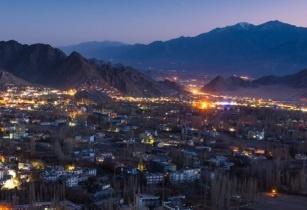Sustainable Energy for All (SEforALL) and partners announced on 18 September in New York, first-of-its-kind research analysing finance flows for electricity and clean cooking access in 20 countries across Africa and Asia with significant access gaps, and how finance strategies could be scaled and refined to reach more people, more affordable, with sustainable energy
The new Energizing Finance series reveals the current flow of finance for energy access and clean cooking will not achieve global goals for delivering universal access by 2030. Estimates show an annual investment of US$45bn is needed to meet universal electrification, but the latest data shows that finance commitments for electricity in these 20 ‘high-impact’ countries that represent 80 per cent of those without electricity access is less than half that number, averaging just US$19.4bn a year. The largest bilateral financier across high-impact countries was China, which was where 21 per cent of finance originated from.
Finance tracked for clean cooking revealed a much greater challenge. Across the 20 countries with the largest clean cooking access gaps representing 84 per cent of the global population without access, annual finance committed averaged just US$32 million, compared to the estimated annual investment need of at least US$4.4bn.
The Energizing Finance research, done in partnership with the World Bank Group, Climate Policy Initiative, the African Development Bank, Practical Action Consulting and E3 Analytics, delivers a strong wake-up call to the levels of finance flowing to close energy access gaps, but also creates a roadmap of opportunities which, if finance is more strategically directed, will allow us to meet the UN Sustainable Development Goal 7, and provide affordable, reliable, sustainable and modern energy for all by 2030.
Other key findings from the Energizing Finance series include:
Only a miniscule amount of financing commitments– 1 per cent, or US$200mn a year – went to more-affordable decentralised energy solutions, such as household solar systems, which hold great promise to deliver basic electricity more quickly and more affordably to vast, hard-to-reach rural populations.
Roughly 60 per cent of tracked finance commitments for electricity– approximately US$11.6bn a year – went to three countries in Asia, India, the Philippines and Bangladesh. Nigeria and Ethiopia were the next largest recipients (US$2.4bn a year combined). Finance commitments in the other 15 high impact countries (11 of these in Africa) stood below US$1bn a year.
Just over a quarter of development finance commitments for electricity access, or 28 per cent, reached the 20 high-impact countries over 2011-15, with delays and under-disbursements being very common, especially for large grid-based energy infrastructure projects.
There were scattered examples of progress on clean cooking, particularly in Indonesia which achieved promising gains by rolling out strategies using liquefied petroleum gas (LNG) as a clean cooking ‘transition’ fuel in place of high- polluting fuels like charcoal.
Climate Policy Initiative (CPI) and the World Bank Group tracked finance for electricity and clean cooking access in high-impact countries. Dr. Barbara Buchner, Executive Director, Climate Policy Initiative, said, “This is the first time anyone has worked to assess how much finance is flowing to energy access, and the results surprised us. While we are clearly nowhere near what’s needed to meet universal energy access goals, a much clearer picture of what’s happening both globally and on the ground, will help nations, investors, and communities to better scale up the next wave of energy investment.”
Country level analysis was conducted in Bangladesh, Ethiopia and Kenya of the financing landscape at the national level. Enterprise surveys were also conducted in these countries plus Myanmar and Nigeria to understand the challenges and opportunities facing businesses providing decentralised energy solutions. Bangladesh and Kenya showed gains in urban and rural areas with integrated strategies that include centralized electric grid infrastructure as well as mini-grid and off-grid energy systems such as solar home systems which are already powering millions of rural households, helped by supportive policies that spur diverse types of public and private finance for energy access projects and companies.
To download the report series, visit: http://seforall.org/EnergizingFinance





















